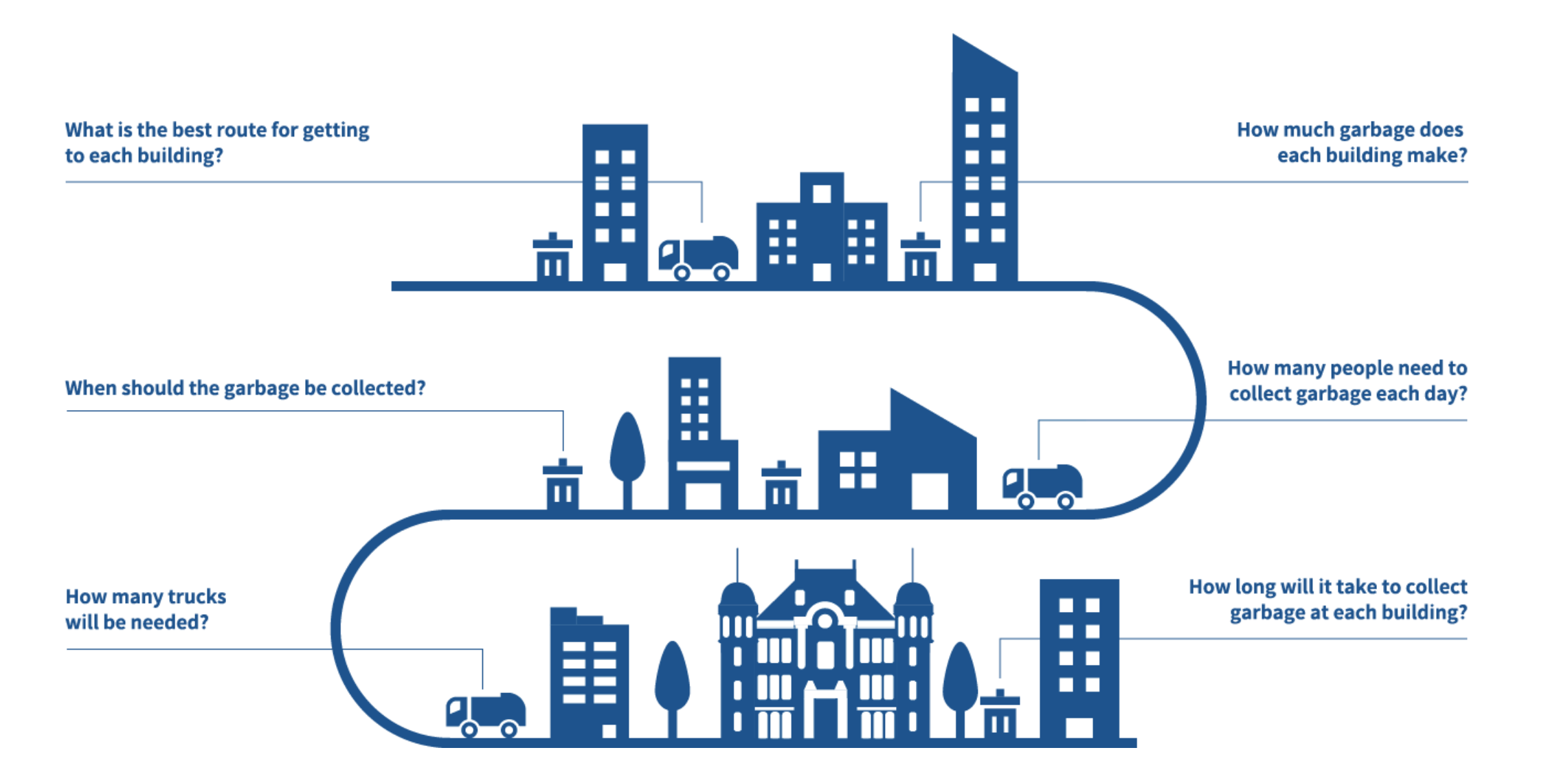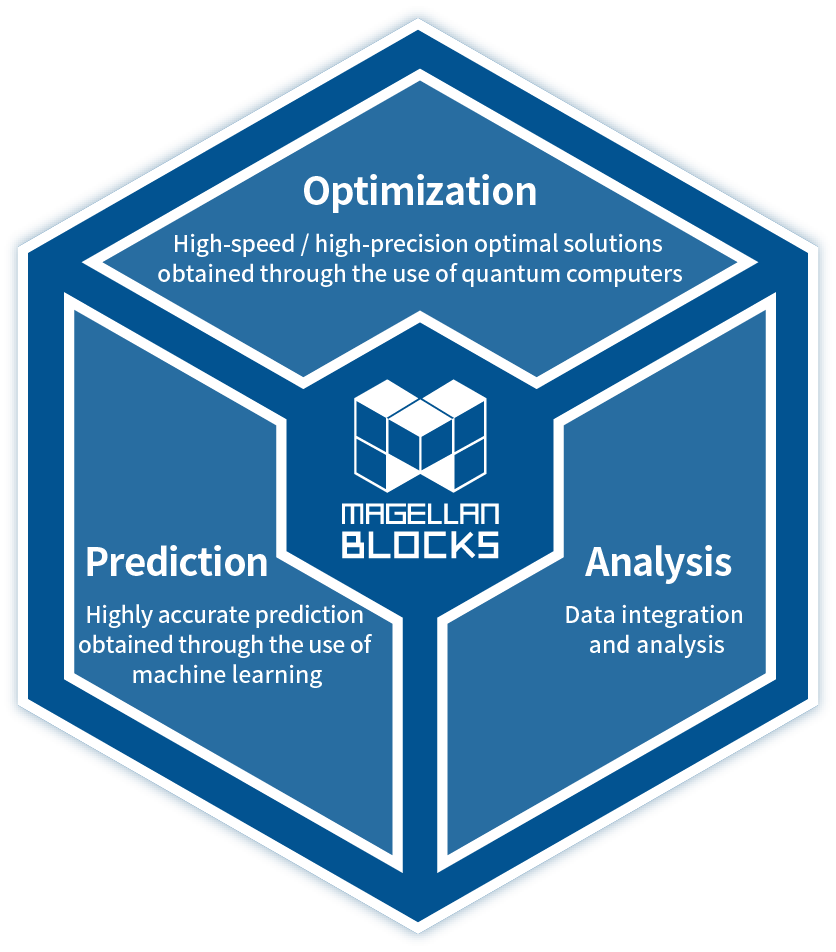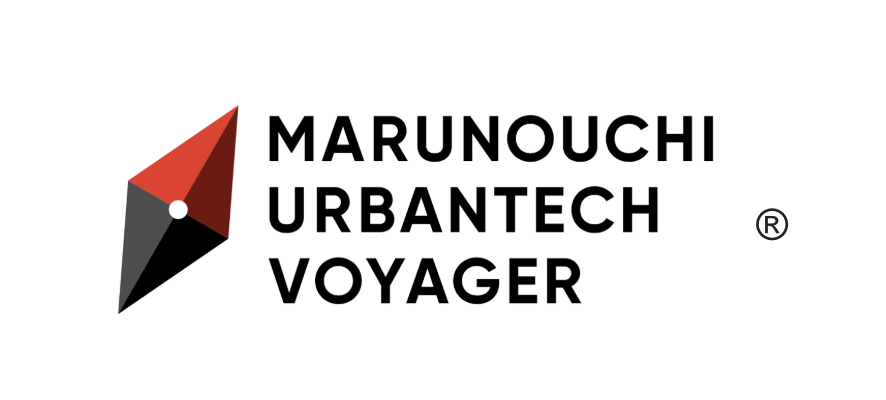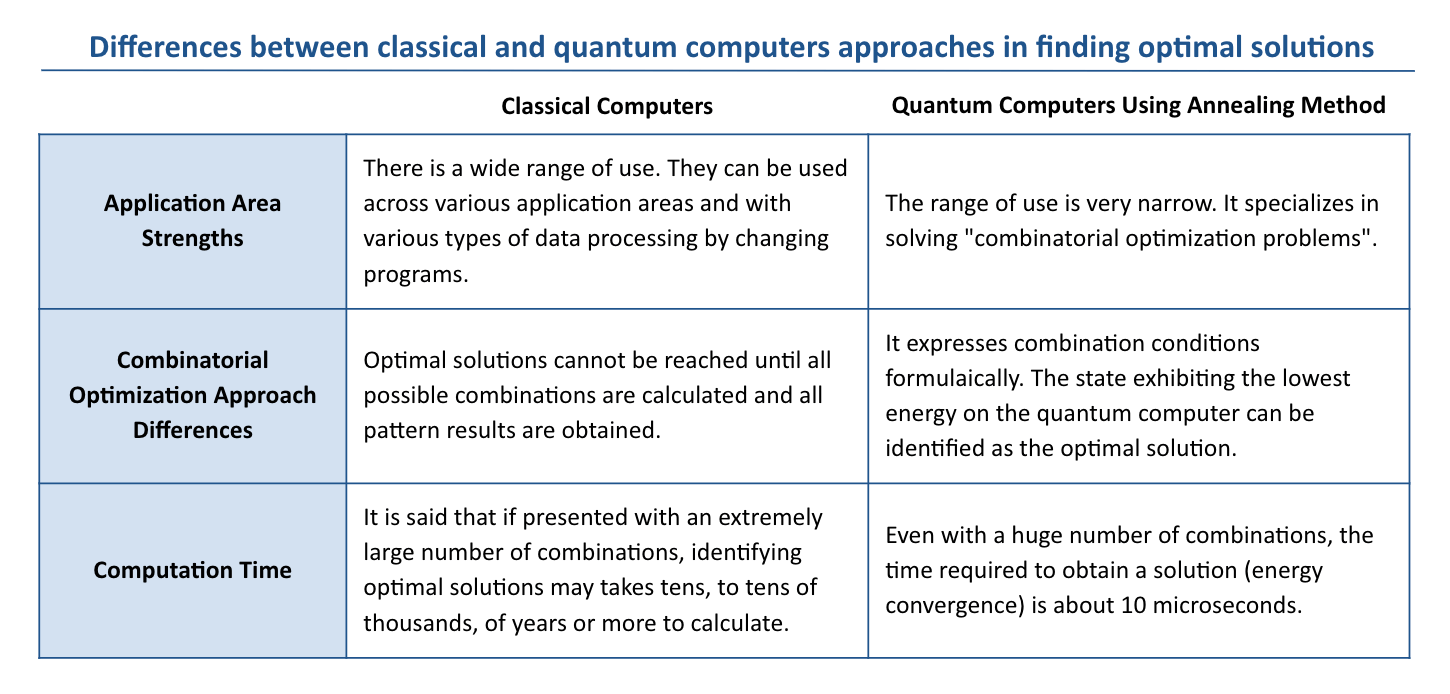Aiming for sustainable cities via operational efficiency, the bridging of labor gaps, and Sustainable Development Goals (SDGs)
-A Report on Waste Collection Route Optimization for 26 Buildings in the Marunouchi Area-
Groovenauts, Inc.
Mitsubishi Estate Co., Ltd.
Download this Press Release
This is a report of the results of an investigation carried out by Groovenauts, Inc. and Mitsubishi Estate Co., Ltd. It examines their use of “MAGELLAN BLOCKS*1”, the world's only cloud platform equipped with AI and quantum computers*2 to perform “Waste Collection Route Optimization” for efficient collection and transportation of waste in the Marunouchi area of Tokyo. This is the first report in Japan*3 to verify the results of the use of AI and quantum computers employing annealing method*4 to address the issue of area waste collection through route optimization.

Verification Study Summary
- Study Name: “Waste Collection Route Optimization”
- Verification Bodies: Groovenauts, Inc. and Mitsubishi Estate Co., Ltd.
- Scope of Study: 26 buildings owned, or operated and managed, by Mitsubishi Estate in the Marunouchi area of Tokyo
- Verification Method:
- Visualization: Collection of data required for verification
- Forecast: Use of MAGELLAN BLOCKS AI (machine learning / deep learning) to predict amount of waste generated
- Optimization: Use of MAGELLAN BLOCKS quantum computer to verify optimal collection route
- Verification results: The comparison of costs related to daily waste collection operations are as follows.

* At the discretion of the waste disposal company, waste is currently collected at properties other than those managed by Mitsubishi Estate. This verification study was carried out under the condition that waste collection optimization involved only the 26 buildings owned, or operated and managed, by Mitsubishi Estate. It is a verification of the reduction potential and is in no way meant to be a confirmation of actual reduction.


Groovenauts and Mitsubishi Estate signed a business alliance agreement to promote “City as a Service” to “create a city that is comfortable and welcoming to people”. Mitsubishi Estate has taken on the third-party capital allotment put into effect by Groovenauts in February 2020. Both companies will now continue to work on the realization of a smart city, conducting various demonstration tests and production deployments within the city.
I. Verification Background
- Mitsubishi Estate praised Groovenauts’ proclivity for, and thorough grasp of, advanced technology. As part of the Marunouchi Data Consortium*5 that was established in September 2019, both companies are seeking to add value to the city, and to society as a whole, through the application of data. This verification report is one part of that effort.
II. Verification Methodology
- Modeling: Collection of data required for verification
- In this verification, various data was collected, including data regarding the number of tenant companies and employees in each of Mitsubishi Estate’s buildings, as well as data on waste collection regulations. In addition, first-hand site inspection was conducted, examining waste collection operations to gather data on vehicle specifications for the transport of waste based on waste type. It also recorded the amounts, collection routes, required labor time and collection frequency for each type of waste produced by each building. The data was organized to produce a depiction of the current situation.
- Data was collected and visualized on the following:
- Number of tenant companies and employees in each of 26 different buildings over the past 3 years, including ratio of tenant types: food and beverage organizations or merchants of goods.
- The amount of waste produced in each of the 26 buildings over the past 3 years, categorized into 14 types, including combustible waste, non-burnable waste, bottles / cans, PET bottles, organic waste, and wastepaper, among others.
- Specifications of waste transport vehicles used by the waste treatment companies in the collection of each of the 14 types of waste (equipment fittings, size, vehicle weight, permissible load, etc.)
- Waste treatment companies, waste amounts, collection routes, required labor times, and collection frequencies, etc., for each of the 14 types of waste produced by each of the 26 buildings.
- In this verification, various data was collected, including data regarding the number of tenant companies and employees in each of Mitsubishi Estate’s buildings, as well as data on waste collection regulations. In addition, first-hand site inspection was conducted, examining waste collection operations to gather data on vehicle specifications for the transport of waste based on waste type. It also recorded the amounts, collection routes, required labor time and collection frequency for each type of waste produced by each building. The data was organized to produce a depiction of the current situation.
- Forecasting: Utilization of MAGELLAN BLOCKS AI (machine learning / deep learning) to predict amounts of generated waste
- Based on collected data, weather data provided by MAGELLAN BLOCKS (such as temperature, humidity, and precipitation), district event information, and other data that can affect forecasts (prediction factors), a model forecasting the amount of each type of waste that would be generated was constructed and evaluated using AI, and then the amount of waste expected to be generated several months later was predicted through simulation.
- Based on collected data, weather data provided by MAGELLAN BLOCKS (such as temperature, humidity, and precipitation), district event information, and other data that can affect forecasts (prediction factors), a model forecasting the amount of each type of waste that would be generated was constructed and evaluated using AI, and then the amount of waste expected to be generated several months later was predicted through simulation.
- Optimization: Utilization of MAGELLAN BLOCKS quantum computer to verify the optimal collection route
- The results obtained from the AI prediction of waste generation were used with quantum annealing to simulate a combination of routes requiring the least number of vehicles, and which was composed of the shortest distances, while reliably maintaining waste collection. Constraints such as load capacity of vehicles, the access and positioning of loading-unloading areas of buildings and disposal sites, and required collection times were considered for all buildings generating waste.

III. Verification Results
- By utilizing the machine learning / deep learning and quantum computing technology of MAGELLAN BLOCKS, the amount of waste generated was able to be predicted with an extremely high level of accuracy (about 94%), and based on that prediction, the optimal route was able to be deciphered from amongst a vast set of possibilities*6. CO2 emissions can be expected to be reduced by approximately 57% in the Marunouchi area by improving the efficiency of waste collection, transportation, and minimalization of travel distances.

- In using AI prediction of waste amounts, forecasts capturing minute day-to-day trends were shown to be over 90% accurate, especially in regard to combustible garbage, organic waste, and cardboard, along with other types of waste. This result clearly supports a transition to implementation. Further accuracy can be expected by encompassing data from not only these buildings but by performing continual learning incorporating data from regional events and other waste generation factors.
- Utilizing quantum annealing, the route for collecting waste, currently requiring a distance of about 2,300 km, was optimized and reduced to just 1,000 km. As a result, CO2 emissions would be reduced by approximately 57%, and the number of vehicles reduced by approximately 59%. This is expected to contribute to SDGs and realize decarbonization.
IV. Future Efforts
Groovenauts and Mitsubishi Estate are conducting PoV (Proof Of Value) for actual operations based on the data findings in this “Waste Collection Route Optimization” verification report. Furthermore, through cooperation with the various waste treatment companies servicing different buildings, long work hours may be reduced, and labor shortages may be eliminated by improving the efficiency of waste collection operations.

In the future, Groovenauts and Mitsubishi Estate will continue to promote “City as a Service” as a model for cities, and will perform verification and service development prior to implementation, utilizing advanced technologies such as AI and quantum computers in hopes to further improve urban services.
Overviews of companies and their initiatives
Groovenauts, Inc.
Groovenauts is promoting machine learning and quantum computers to a wide audience through its MAGELLAN BLOCKS, a technology that anyone can easily use without a programming background or technical expertise. At present, more than 3,800 companies are using over 12,500 AI models through Groovenauts. This a leading achievement in Japan and is successfully commercializing quantum computing technology for the first time in the world.
Groovenauts Smart City Actualization

In addition to developing and realizing the practical application of technology to enhance the efficiency and functionality of industry operations and urban economies, Groovenauts seeks to forge urban environments more closely aligned with the lives of people through alleviating problematic social conditions such as labor shortages and promoting both diversification and individualization of values. Groovenauts considers entire cities as single service spaces and promotes corporate cooperation and the full use of advanced technologies such as AI and quantum computers. They are advancing “City as a Service” initiatives aimed at not only creating upgraded cities but creating cities “full of humanity”.
Mitsubishi Estate Co., Ltd.
"Marunouchi UrbanTech Voyager" is a project that investigates and researches the usefulness of advanced technologies, and of technologies in town planning, to improve the functional offerings of the international city of Tokyo to even greater levels.

“Marunouchi Re-design” is a town development concept for the Marunouchi area

Mitsubishi Estate positions town development in the Marunouchi area (Otemachi, Marunouchi, Yurakucho) from 2020 as the "Marunouchi NEXT Stage". It is offers "the stage for the creation of new value through the attraction and interaction of companies, employees and visitors". "Marunouchi Re-design" is a concept phrase seeking to realize this goal by actualizing changes in the way the city is built.
(Footnotes)
*1 MAGELLAN BLOCKS:
The world's only cloud platform equipped with AI and quantum computers. Utilizing various types of data including numerical values, images, and documents, it is possible to derive solutions to complex business problems through highly accurate AI prediction and an optimized combination of quantum computers. Through the use of quantum computers, one-of-a-kind optimal solutions for everything from the creation of mathematical formulas for physics, to the construction of machine models (Ising model) for optimization of issues concerning people, work, and routes, amongst other things, can be achieved. In addition, users do not need specialized knowledge or programming skills, and by simply inputting operational constraints, it is possible to instantly derive optimal solutions for situations.

*2 Quantum computers:
Instead of processing information with "0" or "1" as conventional computers (classical computers) do, quantum computers utilize a principle of physics known as “quantum mechanics” concerning particle movement invisible to the naked eye, to achieve high-speed processing.
*3 The first report in Japan:
In order to improve the efficiency of waste collection and transportation operations, real data was used with AI and quantum computing technology to search for optimal collection route solutions.
*4 Annealing method:
Quantum annealing type quantum computers are quantum computers specializing in combinatorial optimization problems, performing highly accurate searches for optimal combinations amongst a vast amount of different patterns using the principles of quantum mechanics in the laws of physics. Compared to the quantum gate method, which is not technically feasible in improving computational performance, the consensus is that the high-performance annealing method is ideal for actual applications, and its utility has been confirmed in solving actual business problems such as optimization of routes, shifts, schedules, issues concerning stores, loading and operations.

*5 Marunouchi Data Consortium:
A consortium that aims to create new value and new businesses in the city and society through the use of data. The consortium was established on Thursday, September 12, 2019, by Mitsubishi Estate Co., Ltd. and Fujitsu Limited. In order for participating companies and organizations to work consistently from idea creation to field verification, the consortium holds workshops and seminars, while additionally circulating data and providing utilization platforms and assistance from data scientists to support data analysis. It offers various channels and an alliance for companies to support field trials and new business creation.
*6 Vast set of possibilities:
For example, in the Asian number system, there is a unit known as "kei". 1 “kei” equates to computations on the scale of “1016 ”. Even if all possible combination patterns were to be calculated by one of today’s supercomputers, it would take years to process all of them. The implausibility of this calculation is referred to as a “combinatorial explosion”. Quantum computing is a technology which solves the issue of combinatorial explosions.
† The contents published in this release may be changed or withdrawn without notice.